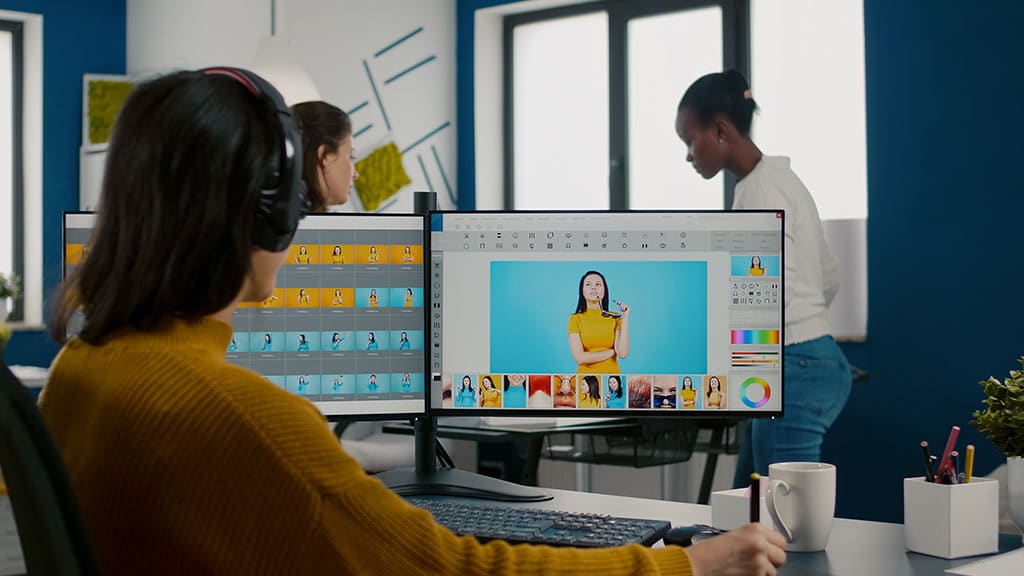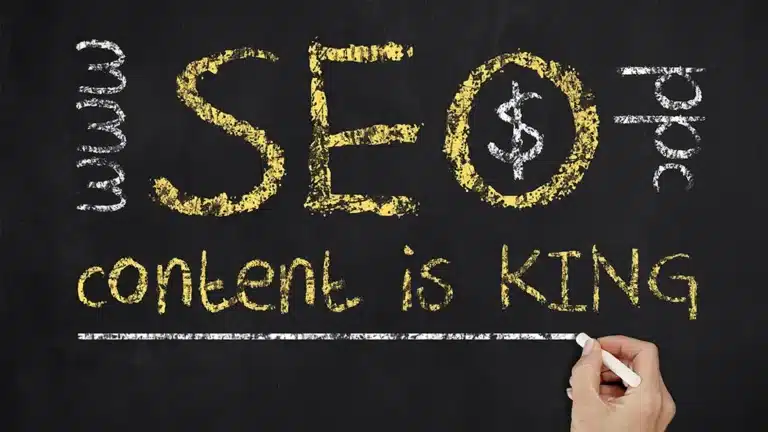Are AI Video Editing Tools the Future of Content Creation?
Introduction: The Rise of AI in Video Editing
As content creation continues to dominate digital platforms, the demand for faster and more efficient editing solutions has skyrocketed. Enter AI video editing tools, a technological advancement reshaping how videos are produced. From automating mundane tasks like trimming clips to applying complex edits like color grading and scene transitions, AI is transforming the way creators approach video production.
These tools are not just for professional videographers. Businesses, influencers, and everyday content creators are embracing AI-driven editing solutions for their accessibility and time-saving capabilities. Platforms like TikTok and YouTube have further fueled this trend by showcasing the value of quick, high-quality video content. As a result, AI editing tools are becoming a cornerstone of modern content creation, offering a blend of efficiency and creativity that traditional methods often struggle to achieve.
For businesses seeking to maximize the potential of AI tools, leveraging social media agency services can help integrate these technologies into a broader marketing strategy. Agencies provide the expertise to pair cutting-edge tools with effective campaigns, ensuring that content not only looks great but also resonates with the intended audience.
How AI Video Editing Tools Work
AI video editing tools use advanced algorithms and machine learning to streamline the editing process. These tools analyze video footage, identify patterns, and make intelligent decisions about cuts, transitions, and enhancements. For example, an AI editor might detect changes in scene composition or motion to suggest where a cut should occur, saving creators hours of manual editing.
Many tools also come equipped with features like voice recognition and text-to-video capabilities, allowing creators to sync dialogue or captions automatically. This is especially valuable for businesses that rely on subtitled content for accessibility or marketing purposes. Additionally, AI-powered tools can analyze the tone and mood of a video to recommend music, filters, or effects that align with the desired message.
Beyond automation, AI tools leverage large datasets to learn from industry trends and user preferences. This enables them to generate polished, professional-grade edits even for users with little to no technical experience. By reducing the learning curve, AI video editing tools make high-quality production accessible to a wider range of creators, empowering businesses and individuals alike to elevate their content.
Benefits of AI Video Editing Tools
The primary advantage of AI video editing tools is their ability to save time without compromising quality. Traditional video editing can be a labor-intensive process, requiring hours of work to achieve professional results. AI tools, however, can complete many of these tasks in minutes, allowing creators to focus on other aspects of content production, such as storytelling and strategy.
Another significant benefit is accessibility. In the past, creating professional-quality videos required expensive software and years of technical training. AI-powered platforms have democratized this process, enabling users of all skill levels to produce visually stunning content. For small businesses or startups with limited resources, these tools offer a cost-effective way to compete with larger brands in the digital space.
AI tools also enhance creativity by taking care of repetitive tasks, such as trimming, formatting, and applying effects. This frees up creators to experiment with storytelling and visual elements, ultimately leading to more engaging and innovative content. For example, automated color correction allows creators to achieve a cohesive look across their videos, while smart cropping ensures that content is optimized for different platforms, such as Instagram Stories or YouTube Shorts.
The scalability of AI video editing tools is another major advantage. Whether you’re producing a single video or managing a content library for multiple campaigns, these tools can handle large workloads efficiently. This makes them especially valuable for businesses and creators looking to maintain a consistent presence on social media.
AI’s Impact on Creativity
One of the most intriguing aspects of AI video editing tools is their impact on creativity. By automating tedious and time-consuming tasks such as cutting footage, syncing audio, and applying filters, these tools allow creators to focus more on storytelling and artistic expression. For instance, an editor working on a promotional video for a product can spend less time worrying about technical details and more time crafting a narrative that connects with the audience.
AI also enhances creativity by introducing features that would otherwise require advanced skills or expensive software. Tools like Runway and Adobe Sensei can analyze video content to suggest edits or effects that complement the tone and style of the footage. For example, an AI tool might detect a dramatic scene and recommend cinematic color grading, saving the creator from manually testing different filters. These intelligent suggestions often inspire new ideas and approaches, pushing creators to explore styles they may not have considered otherwise.
However, there’s an ongoing debate about whether AI stifles originality. Critics argue that over-reliance on AI templates and presets can lead to a homogenized look, where content lacks uniqueness because it adheres to pre-defined patterns. While AI can simplify complex tasks, it’s essential for creators to use these tools as a starting point rather than a complete solution. By layering human creativity onto AI-driven efficiency, creators can produce content that is both polished and original.
Cost-Effectiveness for Businesses
AI video editing tools are transforming the economics of content creation, making professional-grade videos accessible to businesses of all sizes. Traditional video editing often requires a significant investment in high-end software, hardware, and skilled professionals. For small businesses or startups with limited budgets, these costs can be prohibitive.
AI-powered tools lower the financial barrier by offering affordable alternatives that deliver impressive results. Many platforms operate on subscription models, allowing businesses to pay a monthly fee rather than making a large upfront investment. Additionally, cloud-based AI tools eliminate the need for expensive hardware by performing intensive processing tasks on external servers.
For example, a small business looking to create promotional videos for social media can use an AI editing platform like Descript or Pictory to produce high-quality content without hiring a professional editor. These tools not only save money but also reduce the time required to create videos, enabling businesses to produce content at scale.
Industries such as e-commerce, real estate, and education are particularly well-suited to benefit from AI video editing tools. An e-commerce brand, for instance, can quickly generate product showcase videos, while a real estate agency can produce virtual property tours. These capabilities allow businesses to compete with larger players by delivering professional content without overspending.
Despite their affordability, AI tools don’t compromise on quality. The advanced algorithms powering these platforms ensure that even basic edits look polished and professional. This makes AI video editing tools a valuable investment for businesses seeking to maximize ROI on their marketing efforts.
Challenges and Limitations of AI Video Editing
While AI video editing tools offer numerous benefits, they are not without challenges and limitations. One of the most common issues is the lack of nuance in AI-generated edits. Although these tools are excellent at automating repetitive tasks, they often struggle to interpret the creative subtleties that human editors excel at. For instance, an AI might not fully grasp the emotional context of a scene, leading to cuts or transitions that feel jarring or out of place.
Another limitation is the over-reliance on templates and presets. While these features simplify the editing process, they can also result in content that looks generic or formulaic. This is particularly problematic for brands aiming to stand out in a crowded market, as overly templated videos may fail to capture the unique essence of their identity.
AI tools can also struggle with more complex editing tasks, such as integrating multiple creative elements into a cohesive story. While they excel at individual tasks like trimming and color correction, crafting a seamless narrative often requires a human touch. For example, an AI might identify the best clips for a highlight reel but lack the ability to sequence them in a way that evokes the desired emotional response.
Technical challenges also exist, especially for users unfamiliar with the technology. While many AI tools are designed to be user-friendly, some still require a learning curve. Businesses may face initial hurdles when integrating these tools into their workflows, particularly if they lack experience with video editing.
Despite these limitations, the potential of AI video editing tools continues to grow. As the technology evolves, many of these challenges are being addressed, paving the way for even more sophisticated and intuitive solutions. However, it’s essential for creators and businesses to recognize these limitations and use AI tools as complementary aids rather than replacements for human expertise.
AI Tools for Different Use Cases
AI video editing tools cater to a wide range of creators and industries, offering tailored features for different use cases. Short-form content, such as Instagram Reels, TikTok videos, and YouTube Shorts, benefits significantly from AI tools like Pictory and Magisto, which streamline the editing process with features like auto-cropping and text overlays optimized for vertical formats. These tools are particularly useful for social media marketers who need to produce attention-grabbing content quickly and consistently.
For long-form videos, platforms like Adobe Sensei and Runway excel in automating time-consuming tasks such as color grading, scene transitions, and audio syncing. These tools are invaluable for creators working on projects like webinars, tutorials, or documentary-style videos, where maintaining a professional look and feel is critical.
Professional projects often require a higher level of precision and customization. AI tools like Descript allow editors to manipulate video and audio seamlessly, offering advanced features such as text-based editing and automatic transcription. For businesses creating corporate presentations or high-end promotional videos, these platforms provide the necessary sophistication without requiring extensive technical expertise.
By understanding the strengths of different AI tools, creators and businesses can select the ones that align best with their specific needs. Whether it’s producing quick, engaging clips or crafting polished long-form content, the versatility of AI editing tools ensures there’s an option for every use case.
The Role of AI in Collaborative Editing
Collaboration is an integral part of many video editing workflows, especially for teams producing high-volume or high-stakes content. AI-powered tools enhance collaborative editing by streamlining communication, organization, and workflow management. Cloud-based platforms like Frame.io and Canva Pro allow team members to work on the same project simultaneously, regardless of location, while AI automates repetitive tasks to free up time for more creative input.
One of the most significant advantages of AI in collaborative editing is its ability to standardize processes. For example, AI tools can automatically organize and tag raw footage based on content, making it easier for teams to locate specific clips. This reduces the time spent searching through files and ensures everyone has access to the materials they need.
AI also facilitates smoother feedback cycles. Many platforms offer features like auto-generated subtitles or previews, which help collaborators review and comment on edits more efficiently. Instead of waiting for a full draft, stakeholders can see incremental updates and provide input in real time, ensuring the final product aligns with their vision.
For businesses with large teams or distributed workforces, AI-powered collaborative tools make video production more agile and scalable. By integrating AI into their workflows, teams can focus on creativity and strategy, knowing that the logistical aspects of editing are handled seamlessly.
Ethical Considerations and Copyright Issues
As with any technological advancement, AI video editing tools raise important ethical and legal concerns. One significant issue is the potential misuse of AI for creating misleading or harmful content, such as deepfakes. These highly realistic but fabricated videos can damage reputations, spread false information, or create trust issues with audiences. Businesses and creators must remain vigilant about the ethical implications of using AI and establish clear guidelines to prevent misuse.
Copyright issues also pose challenges for AI-generated content. Many AI tools rely on datasets that include copyrighted material, raising questions about ownership and originality. For example, if an AI-generated video uses elements derived from existing copyrighted works, determining who owns the final product can be complicated. Creators and businesses should ensure that the AI tools they use comply with copyright laws and licensing agreements to avoid potential legal disputes.
Transparency is another key consideration. Audiences value authenticity, and failing to disclose that content was created or heavily influenced by AI can erode trust. Being upfront about the use of AI tools not only builds credibility but also demonstrates ethical responsibility.
By addressing these ethical and legal concerns proactively, creators and businesses can leverage AI video editing tools responsibly while protecting their reputation and ensuring compliance with intellectual property laws.
The Future of AI in Content Creation
The evolution of AI video editing tools is just beginning, and the future holds exciting possibilities for creators and businesses alike. One emerging trend is the integration of generative AI, which can create entirely new content, such as visual effects, animations, and even full video sequences, based on minimal input. This technology has the potential to revolutionize industries like entertainment, advertising, and education by enabling faster and more innovative production processes.
AI’s ability to analyze vast amounts of data will also lead to more personalized content creation. For example, future tools could tailor edits to match specific audience preferences, creating videos optimized for different demographics or individual users. This level of customization could significantly enhance audience engagement and drive better results for marketing campaigns.
Another exciting development is the potential for fully autonomous content creation. Imagine an AI tool that not only edits video but also writes scripts, generates voiceovers, and produces complete marketing campaigns. While this may seem futuristic, advancements in AI technology suggest it could become a reality within the next decade.
However, the future of AI in content creation will also require careful navigation of ethical and creative challenges. As AI tools become more sophisticated, maintaining a balance between automation and human creativity will be critical. The best results will likely come from a hybrid approach, where AI handles repetitive tasks and enhances efficiency while human creators focus on storytelling and innovation.
AI video editing tools are undeniably shaping the future of content creation. By staying informed and adaptable, creators and businesses can harness these advancements to produce compelling, high-quality videos that stand out in an increasingly competitive digital landscape.

















